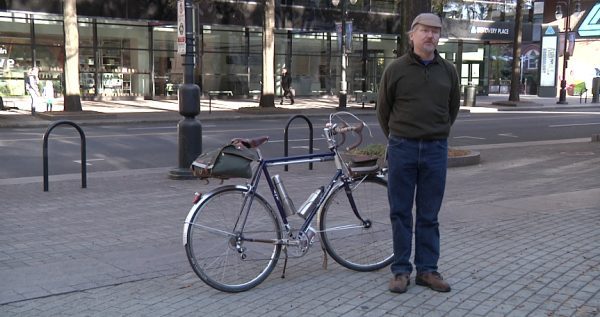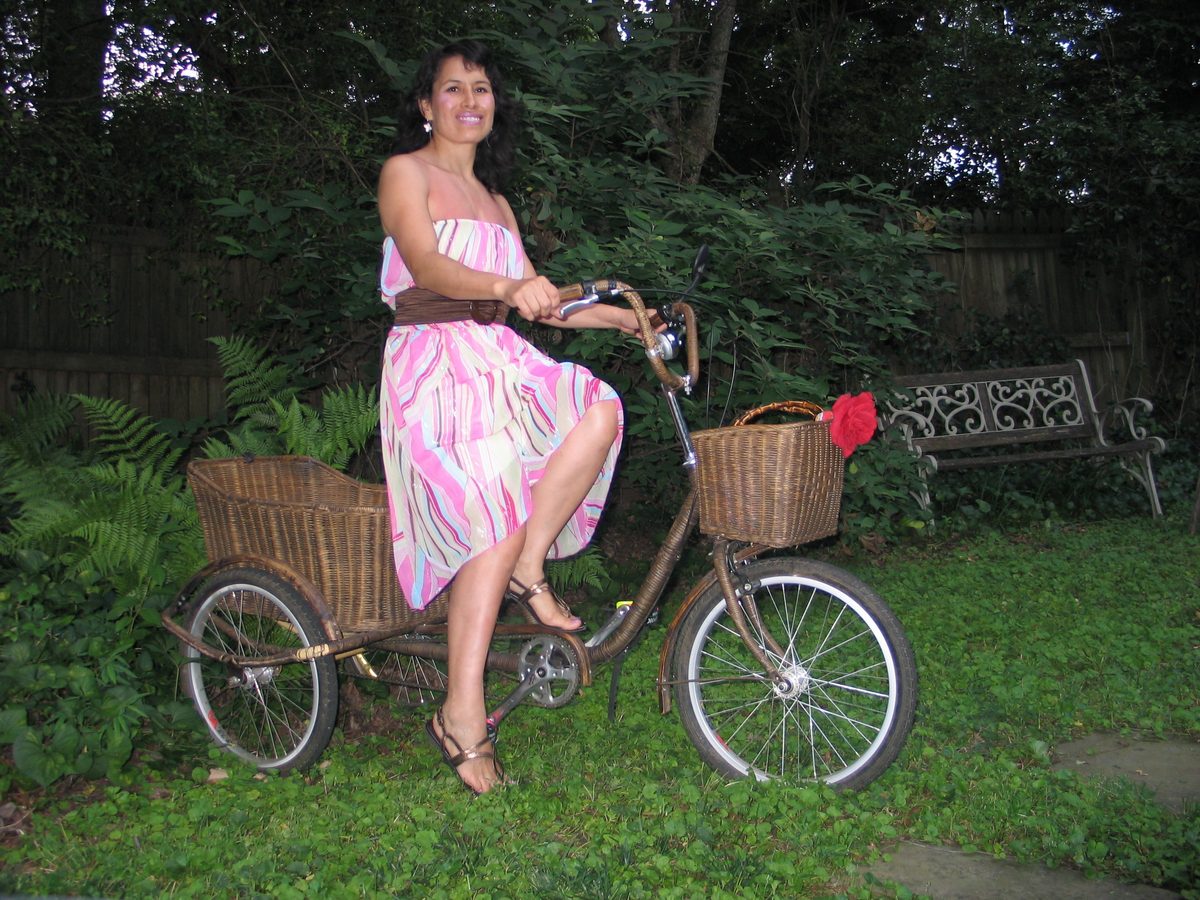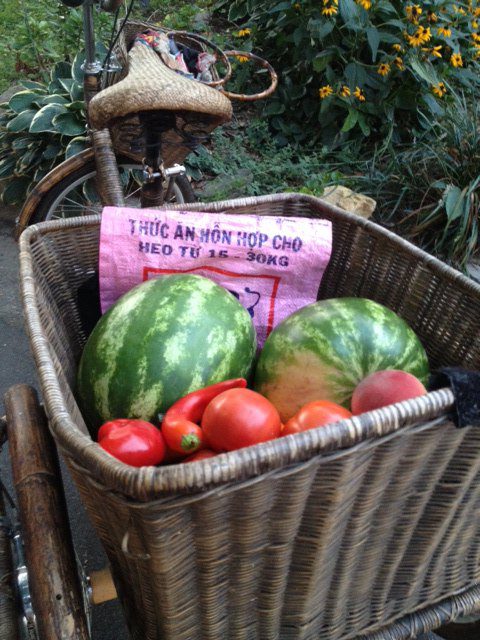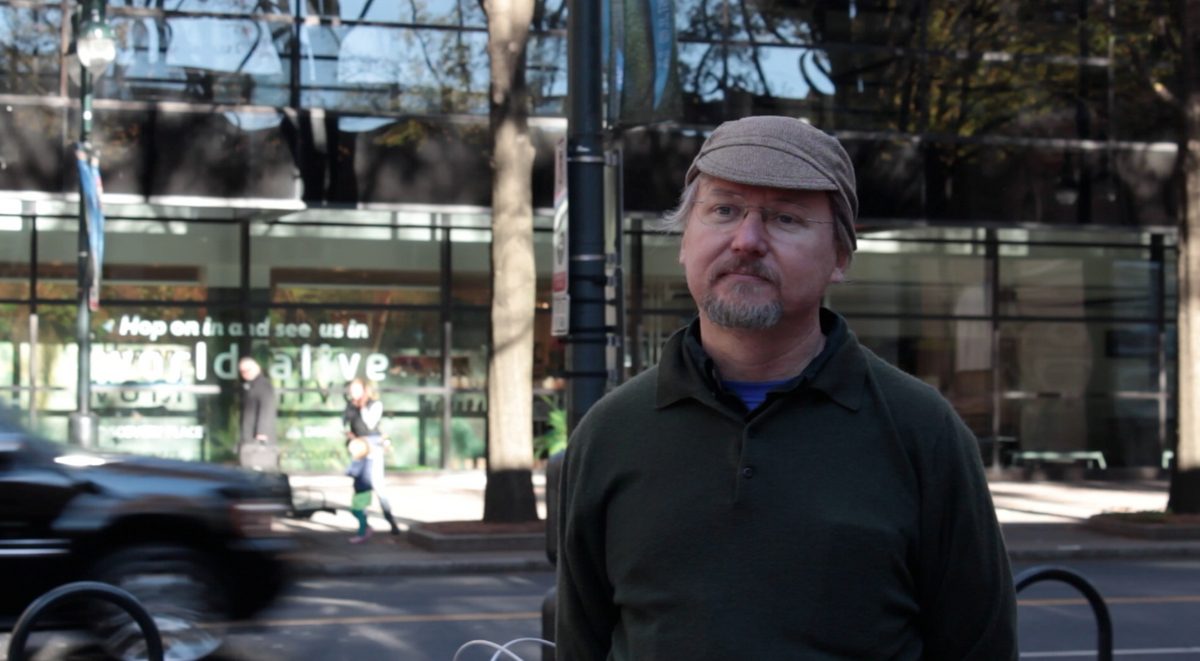They’d rather not drive, thank you

Although the vast majority of Charlotteans (roughly 98 percent) don’t commute to work on public transportation, the opening of the Lynx Blue Line in 2007 has made a visible difference in the county’s transportation choices.
But is another change afoot as well? Nationally, Americans are driving less than they used to. The Atlantic Cities website reports that in 2013 the number of vehicle miles driven per person in the U.S. declined for the ninth year in a row. The latest vehicle-miles-driven rate is 7 percent less than its 2004 peak, according to one analyst, the Atlantic Cities article reports.
Young people across the nation are not as eager to drive as they once were. (See “Is Gen Y really breaking up with the car?”) Bicycling is visibly more popular – and prominent– in the city than 20 years ago. (See “Charlotte joins global bike phenomenon.”) The Charlotte Area Transit System doesn’t keep statistics on whether young ridership is growing compared to other age groups, so it’s impossible to assess whether the national trends are borne out locally.
But some hardy local city-dwellers are opting to take transit and bicycle even when they own cars and can just as easily drive. For some, it’s about the environment. For some, it’s about doing their part to make the city more livable, and more urban. And for some, it’s becoming a way of life.
Here are profiles of four Charlotteans explaining why they ditched the driver seat for bike saddles, bus poles and light rail benches.
Scott Curry
Scott Curry, 28, rides the North Mecklenburg Express bus line north and south along Interstate 77 every weekday between his apartment in uptown Charlotte and his urban planning job in Davidson. When he tells his car-owning friends this, most roll their eyes. But it’s only natural for Curry, whose job is to craft land and transit plans, to take the bus.
“The typical assumption is that I’m a practicing urban planner and that I’m trying to practice what I preach,” he says. “But there are bigger reasons.”
Curry and his wife, who commutes on her bike to an engineering job uptown, estimate they save more than $5,000 a year by taking transit. He says the bus is convenient. Note, that is the same public transportation system that three in five Mecklenburg County residents say they would ride if it were more convenient, according to a 2012 survey by the National Resources Defense Council.
He sips his coffee, reads the news, and replies to emails while the bus takes him to Exit 30 in Davidson. Sometimes he even watches a live-audience soap opera taking place around him. “You kind of develop a weird friendship at a distance with a lot of the folks that you commute with,” Curry says. “There was sort of a transit romance a couple of us got to see happen over a few months last summer.”
Curry and his bus buddies watched as the transit romance unfolded: A man shamelessly tried to woo a female fellow passenger on the 77X.
“They lived on different parts of the route and the portion of the route that overlapped, he was chatting her up and clearly interested.”
Curry isn’t sure where the relationship ended up, but promises you won’t see that sort of thing commuting by car.
“When you’re driving you get frustrated with traffic and there’s no opportunity to relax,” says Curry. “I miss nothing about driving.”
He can’t remember his first car, but remembers his last one clearly – and doesn’t miss it. He bought a 1989 Mercury Cougar with a red velvet, mothball-covered interior for $1,000 and drove it three years while at graduate school at the University of Michigan.
The Cougar and his urban planning education were obvious incentives to switch from driver to rider, but he recommends a different strategy for others trying to make the same transition. The best thing they can do, he says, is move close to their job or to a transit route that can get them to work.
“I see so often where people make a big life decision in terms of buying a house or moving somewhere and they don’t factor in at all the daily commute that implies. It’s just mind-boggling to me,” Curry says. “Your commute to work is such a big part of your day and life. How can they not consider different options for how they might accomplish that?”
Jackie Johnson
Jackie Johnson, 28, rides the Lynx Blue line between her South End apartment and uptown every day. As she rides she takes the 10 or so minutes to people-watch – and she doesn’t like what she sees.
“In the morning, most people have their head down in their phone. I just feel like we’re losing touch with each other. It’s dumb.”
Despite her disappointment with light rail etiquette, she prefers riding to driving. She relies on a combination of light rail and the occasional bus ride to get to her banking job uptown, visit bars and restaurants and run errands.
Before moving uptown in May 2011 and then to South End six months later, Johnson battled miles of traffic on I-77 every morning for eight months, commuting from her Lake Norman-area home.
“I finally said, ‘I’m moving where I can walk or ride to work.’ It was my No. 1 decision-maker in choosing where to live,” Johnson says. “Now, I’m literally 20 or 30 feet from the tracks. I can hear it from the balcony.”
Johnson began riding transit when she moved to Denver in 2010. Denver’s transit system, the Regional Transportation District, made it easy to work the new kind of commute into her daily routine. Her best tip for people considering riding transit in Charlotte: Ignore what you hear and give it a try. People told her Charlotte’s buses were “sketchy” and smelly and light rail was a pain, but after the first few trips, CATS grew on her. Anything was better than the I-77 gridlock.
“It kind of snowballs into: ‘OK, I can ride the light rail,’ and, ‘Oh, that’s only a mile away. Maybe I can walk,’ ” Johnson says.
She still owns a car but just for weekend trips. “There’s that envy that you have about European countries where you can affordably hop on the train and travel from city to city. It would be insanely awesome to have a train to Greenville, S.C., or the Lake Norman area.”
Teresa Hernandez

Teresa Hernandez closes her NoDa gift shop, Pura Vida, every afternoon from 2 to 4 p.m. She takes a late afternoon siesta or pedals around the neighborhood running errands. The same concerns that inspired her shop, which carries fair trade crafts from more than 40 marginalized countries around the world, inspired her four years ago to sell her car and rely on bicycles.
“Whenever I make quote ‘difficult decisions’ to ride instead of drive, I ask myself, ‘Well what do these people from around the world do that I work with every day?’ They don’t have a car. They don’t have this. They don’t have that. And they still survive,” Hernandez says.
She estimates she rides her bikes more than 4,000 miles a year. She commutes to her shop from her home in Plaza Midwood. She doesn’t own a car and hates asking for rides. She won’t ride the bus because she doesn’t like waiting for it. That leaves her bikes, no matter the task.
Hernandez has an everyday road bike with waterproof panniers for commuting and running errands, a fat-tired mountain bike for trail riding, and a vintage blue 1980s road bike with a white flower “to make it look cute.”  But her workhorse is her bamboo tricycle. With two huge baskets attached above the three wheels, the low, slow trike can carry anything, she says – even a person.
But her workhorse is her bamboo tricycle. With two huge baskets attached above the three wheels, the low, slow trike can carry anything, she says – even a person.
In the past she’s carried large potted plants, her cat and huge boxes filled with art accidentally shipped to her home instead of her shop. She enjoys the challenge.
“When I start thinking, ‘Aww, I’ve got to carry all of that on my bicycle.’ I’m like, ‘Wait, people in other places carry more than that all the time, like three kids or all of their chickens or goats.”
Despite a bike accident in Spain where she fractured her nose, Hernandez is more intimidated riding in Charlotte. She says the issue is patience.
“I’m jealous of the mindset other countries have about cyclists. No one telling you to get off, they would just go around you. No hurry,” she says. “People here have such an urgency to get somewhere. You’re holding them back for three minutes and they want to run you off the road.”
Recently, she and her boyfriend, Osiris Rain, a local painter, rode to Waxhaw in Union County, to help Osiris’ father with chores. As they headed home, pedaling over hill after hill, the trip ended in late afternoon road rage at the height of rush hour on Monroe Road.
A driver, annoyed that the exhausted couple was taking up the lane, honked and yelled to “get the hell off the road.” Tempers flared.
“Osiris got off his bike, grabbed his u-lock and went after him to hit him. The guy just said, ‘Dude chill out. Then he chilled out and went around us.”
David Spranger

David Spranger didn’t always hate driving. That dislike grew slowly as he drove to work every day, stressed about an increasing number of distracted drivers. Then his silver Toyota pickup truck died.
“I just decided I wasn’t going to fix it,” says Spranger. “As I got older – probably late 30s, definitely into my 40s – I disliked driving more and more. It became less important to me.”
So Spranger, 51, started biking. He had ridden since childhood, but never like this. A Mecklenburg County IT administrator, he commutes about 8 miles on weekdays between his job at the main Charlotte Mecklenburg Library uptown and his east Charlotte home near Albemarle Road.
Pedaling on Albemarle Road and Central Avenue, he thinks of what drivers are missing.
“I’ve got a really great secret here. I’m having more fun than they are behind the wheel. I’m enjoying my commute way more than people stuck in traffic in that little glass bubble of theirs.”
Spranger has tried to help friends transition from driver to cyclist but has never been able to get any to ride full time. He says it’s because of misconceptions about safety.
“Our society is taught that if you’re not behind a steel cage with airbags, that you’re not safe out on the roads. The truth is, our roads are very safe,” he says. “Yes, things could be done to make things better. But riding your car is way more dangerous than riding your bike to work.”
He can cite studies off the cuff to back this up: studies that show blinking tail lights may actually attract drunk drivers at night, studies that remind us helmets are only a weak, secondary defense against the massive steel machines cyclists share the road with, and studies that show riding on sidewalks is more dangerous than owning the lane. He knows those things are counterintuitive to someone just starting to bicycle, so the bicycle safety techniques he’s most adamant about are education and communication.
Bicycling has been Spranger’s primary mode of transportation for 10 years. And in those years he said he’s had two minor incidents with cars on the road, neither of which resulted in injury or property damage.
“It’s mostly how I ride. I communicate. I’m predictable. I abide by laws.”
This also decreases driver resentment, he says, and he rarely encounters much resistance from drivers.
Corey Conner wrote is article while interning at the UNC Charlotte Urban Institute in 2014 as a student at UNC Charlotte.
Corey Conner